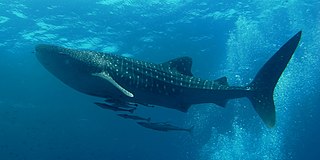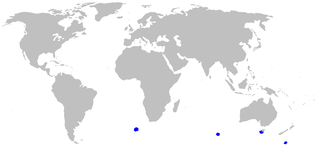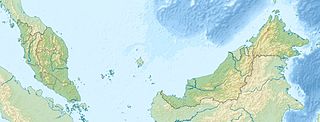
The hammerhead sharks are a group of sharks that form the family Sphyrnidae, so named for the unusual and distinctive structure of their heads, which are flattened and laterally extended into a "hammer" shape called a cephalofoil. Most hammerhead species are placed in the genus Sphyrna, while the winghead shark is placed in its own genus, Eusphyra. Many, but not necessarily mutually exclusive, functions have been postulated for the cephalofoil, including sensory reception, manoeuvering, and prey manipulation. Research has shown that the cephalofoil gives the shark improved binocular vision and depth perception.

The Squaliformes are an order of sharks that includes about 126 species in seven families.

The whale shark is a slow-moving, filter-feeding carpet shark and the largest known extant fish species. The largest confirmed individual had a length of 18.8 m (62 ft). The whale shark holds many records for size in the animal kingdom, most notably being by far the largest living nonmammalian vertebrate. It is the sole member of the genus Rhincodon and the only extant member of the family Rhincodontidae, which belongs to the subclass Elasmobranchii in the class Chondrichthyes. Before 1984 it was classified as Rhiniodon into Rhinodontidae.

Oligodon is genus of colubrid snakes that was first described by the Austrian zoologist Fitzinger in 1826. This genus is widespread throughout central and tropical Asia.

Streaked Kukri Snake(Oligodon taeniolatus) is a species of nonvenomous snake found in Asia. Also known as the Variegated Kukri or the Russell's Kukri.

The Somniosidae are a family of sharks in the order Squaliformes, commonly known as sleeper sharks. The common name "sleeper shark" comes from their slow swimming, low activity level, and perceived non-aggressive nature.

The sherwood dogfish or Sherwood's dogfish is a very rare sleeper shark of the family Somniosidae, found only around New Zealand. The only specimen studied was about 80 cm long.

The Galapagos bullhead shark, Heterodontus quoyi, is a bullhead shark of the family Heterodontidae found in the tropical eastern Pacific Ocean between latitudes 0° to 10°S, at depths between 3 and 40 m. It can reach a length of 1.07 m.

The whitetip weasel shark is a weasel shark of the family Hemigaleidae. Only one specimen, caught off Kosi Bay, South Africa, has been caught. That specimen was 96 cm long. In 2020, a fuzzy image believed to be this shark was obtained on the show Extinct or Alive.

The Portuguese dogfish or Portuguese shark, is a species of sleeper shark of the family Somniosidae. This globally distributed species has been reported down to a depth of 3,675 m (12,057 ft), making it the deepest-living shark known. It inhabits lower continental slopes and abyssal plains, usually staying near the bottom. Stocky and dark brown in color, the Portuguese dogfish can be distinguished from similar-looking species by the small spines in front of its dorsal fins. Its dermal denticles are also unusual, resembling the scales of a bony fish. This species typically reaches 0.9–1 m (3.0–3.3 ft) in length; sharks in the Mediterranean Sea are much smaller and have distinct depth and food preferences.
Scymnodalatias is a genus of squaliform sharks in the family Somniosidae.

The whitetail dogfish is a very rare sleeper shark of the family Somniosidae, found from the eastern Indian Ocean round southern Australia to New Zealand, at depths of between 150 and 500 m. Its length is up to 1.1 m.

The Azores dogfish is a very rare sleeper shark of the family Somniosidae. It is known only from the holotype caught north of the Azores and another caught in 2001.

Oligodon kheriensis or the Coral Kukri Snake or Red Coral Kukri Snake is a Kukri snake that was first described in 1936 from the North Kheri Division.
Oligodon calamarius, commonly known as the reed-like kukri or Templeton's kukri snake, is a species of nonvenomous colubrid endemic to Sri Lanka. It is known as කබර දත්-කැටියා in Sinhala.
Oligodon ancorus, commonly known as the northern short-headed snake, is a species of colubrid snake found on the islands of Luzon and Mindoro in the Philippines, and the island of Sumatra in Indonesia. However, whether the populations from Sumatra, described as Oligodon rhombifer, belong to this species has been contested.

Oligodon booliati, also known as the Boo-Liat's kukri snake, is a species of snake of the family Colubridae. It is endemic to the Tioman Island, Malaysia. The snake was named for Malaysian zoologist Lim Boo Liat.

Oligodon fasciolatus, commonly known as the small-banded kukri snake or the fasciolated kukri snake, is a species of snake in the family Colubridae. The species is native to Southeast Asia. This snake uniquely eviscerates poisonous toads to avoid the toad's venom.
















